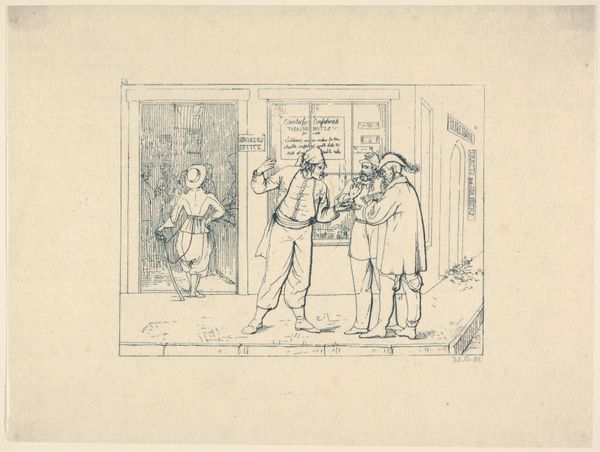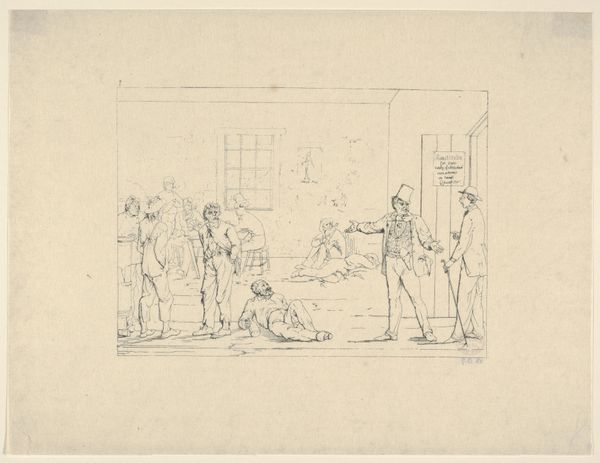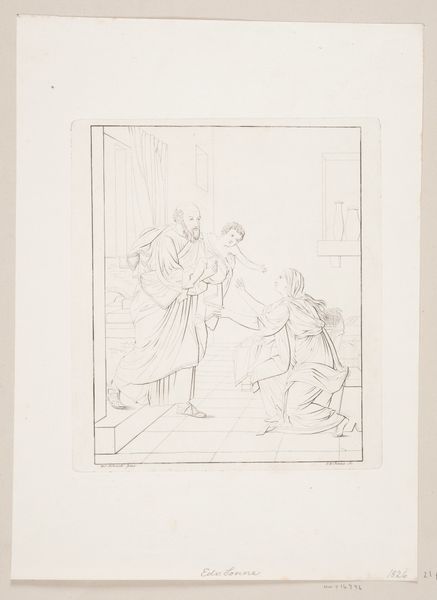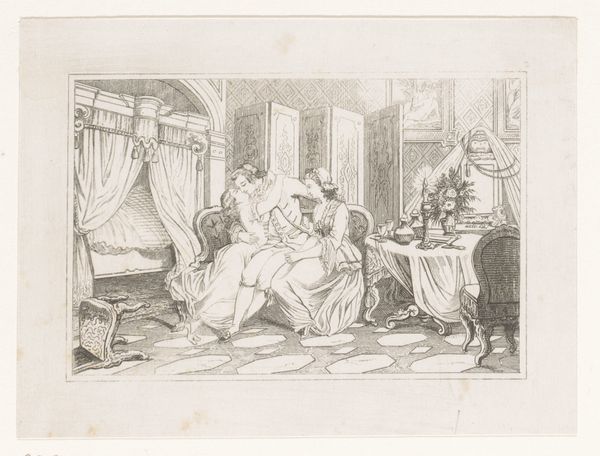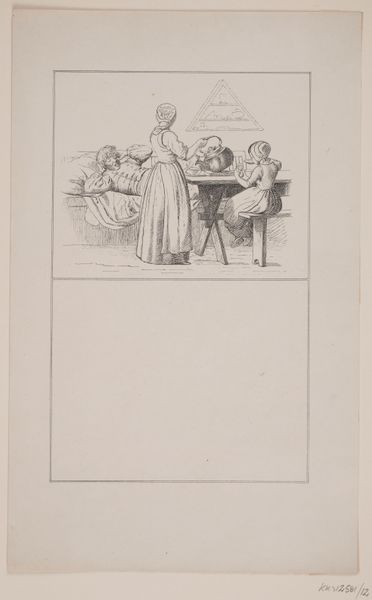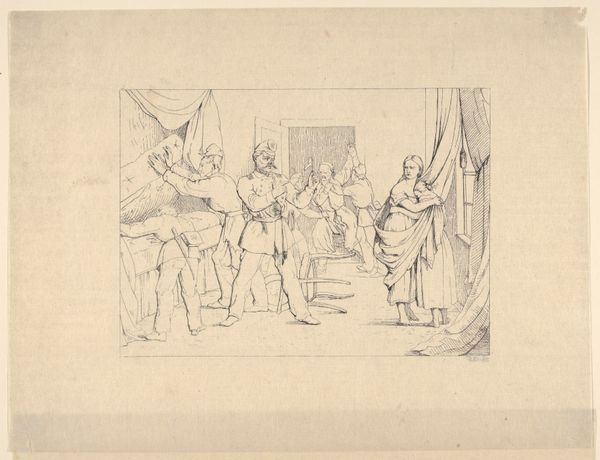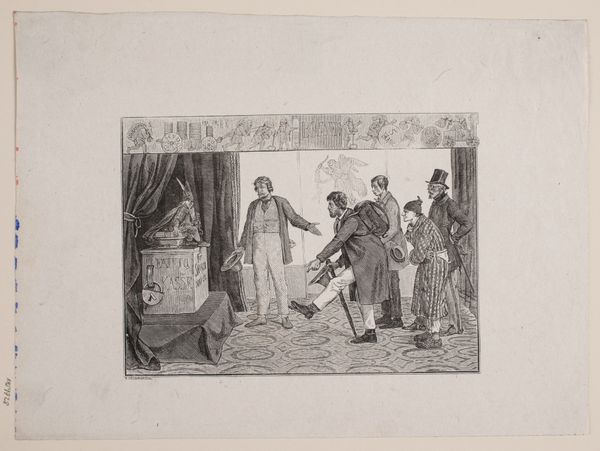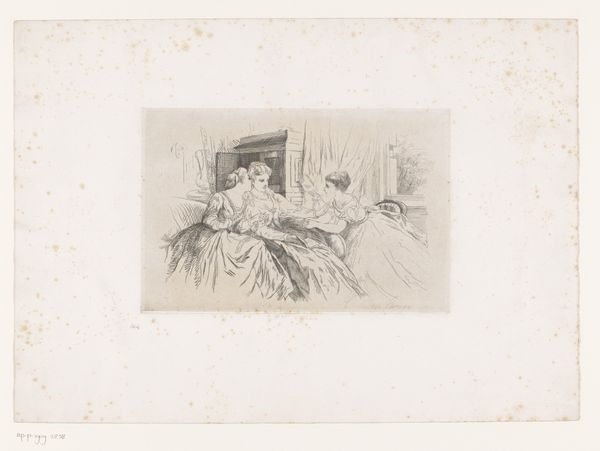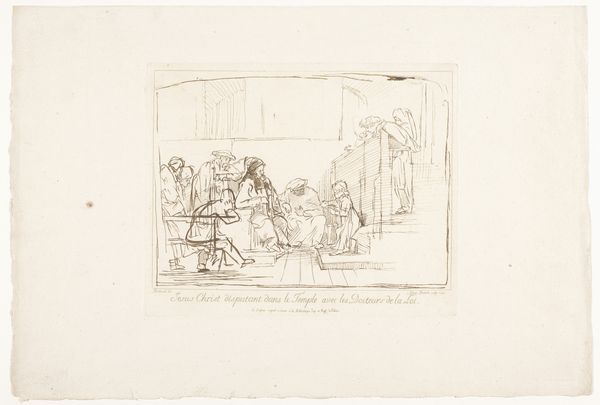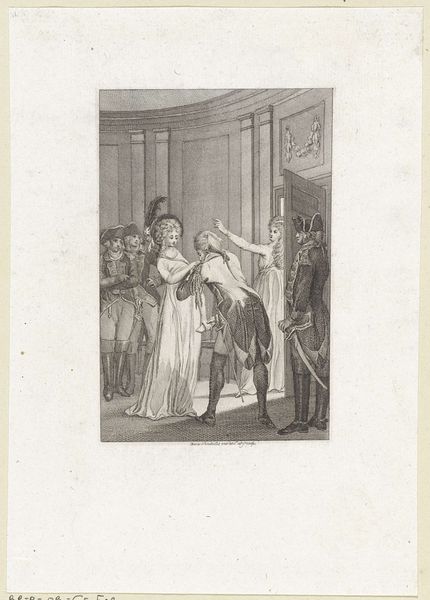
Slaves Concealing their Master from a Search Party (from Confederate War Etchings) 1861 - 1863
0:00
0:00
drawing, print, etching
#
drawing
#
confessional-art
#
narrative-art
# print
#
etching
#
war
#
history-painting
#
realism
Dimensions: Image: 4 13/16 x 6 13/16 in. (12.2 x 17.3 cm) Sheet: 7 13/16 x 10 3/8 in. (19.9 x 26.4 cm)
Copyright: Public Domain
Curator: Adalbert Volck’s etching, titled "Slaves Concealing their Master from a Search Party," part of his "Confederate War Etchings" series, dates from the years 1861 to 1863, during the American Civil War. Editor: My first impression is one of stark domesticity sharply contrasted with looming threat. The high-contrast linework certainly contributes to this feeling of impending danger disrupting a mundane interior scene. Curator: Volck, a Confederate sympathizer, uses this image to convey a very specific narrative. We see enslaved people risking their lives to protect their white master from Union soldiers. It presents a romanticized, distorted view of the master-slave relationship, one built on loyalty and affection, erasing the brutal realities of slavery. Editor: Note how the composition itself seems fractured; the space feels compressed. The interior, represented through sharply defined lines, becomes almost a stage for this tense drama. Consider how Volck frames the figures—each element pulling our gaze around the scene. Curator: Right, the artist positions the figures in a way that manipulates the viewer's sympathy. The Black individuals are portrayed as selfless protectors, reinforcing a paternalistic, white supremacist ideology. We need to understand this piece within the context of Confederate propaganda. How does the visual language used justify their cause and perpetuate harmful stereotypes? Editor: But look closer at the architectural rendering of the space itself: the window's placement, the angles of the doorway... Doesn't this precise structuring amplify the anxiety present in the narrative? The house isn't simply a backdrop; it's integral to the emotionality. Curator: And this precise rendering is not accidental. Volck aims to create a believable, relatable scene to manipulate emotions effectively, and it has been used as propaganda to perpetuate the lost cause narrative of the Confederacy, reinforcing the idea that enslaved people were content and loyal. Editor: Despite its contentious subject, Volck’s deployment of line and spatial dynamics demonstrates how formal elements can generate meaning independent of its political message, creating tension whether or not the viewer buys into its story. Curator: Analyzing it helps reveal the insidious nature of Confederate propaganda, exposing the ways in which visual narratives were used to perpetuate harmful racial ideologies and justify a deeply unjust social order. Editor: This has prompted me to reconsider how stark choices regarding visual construction are tied inextricably to the propagation of social attitudes in artworks.
Comments
No comments
Be the first to comment and join the conversation on the ultimate creative platform.
